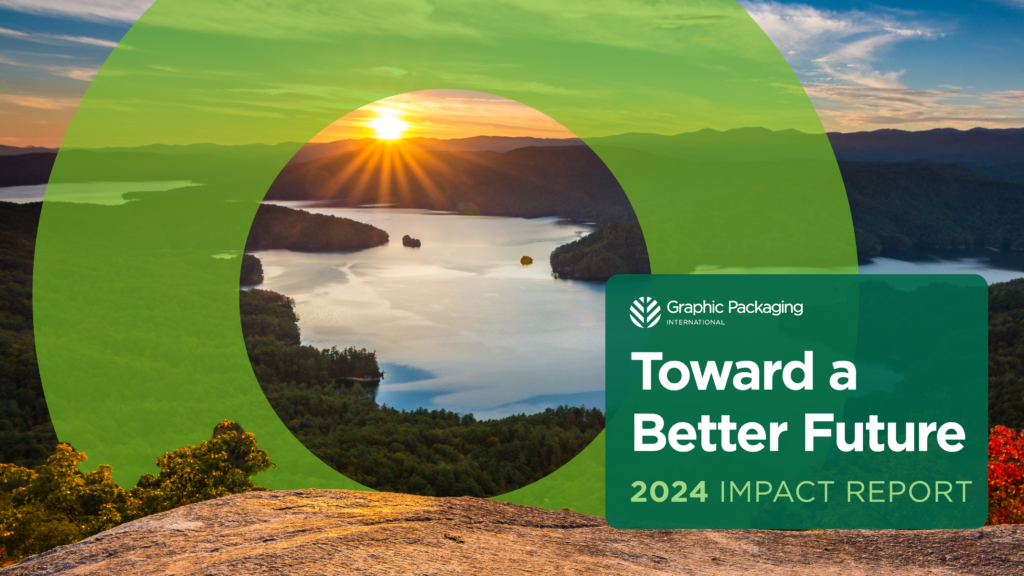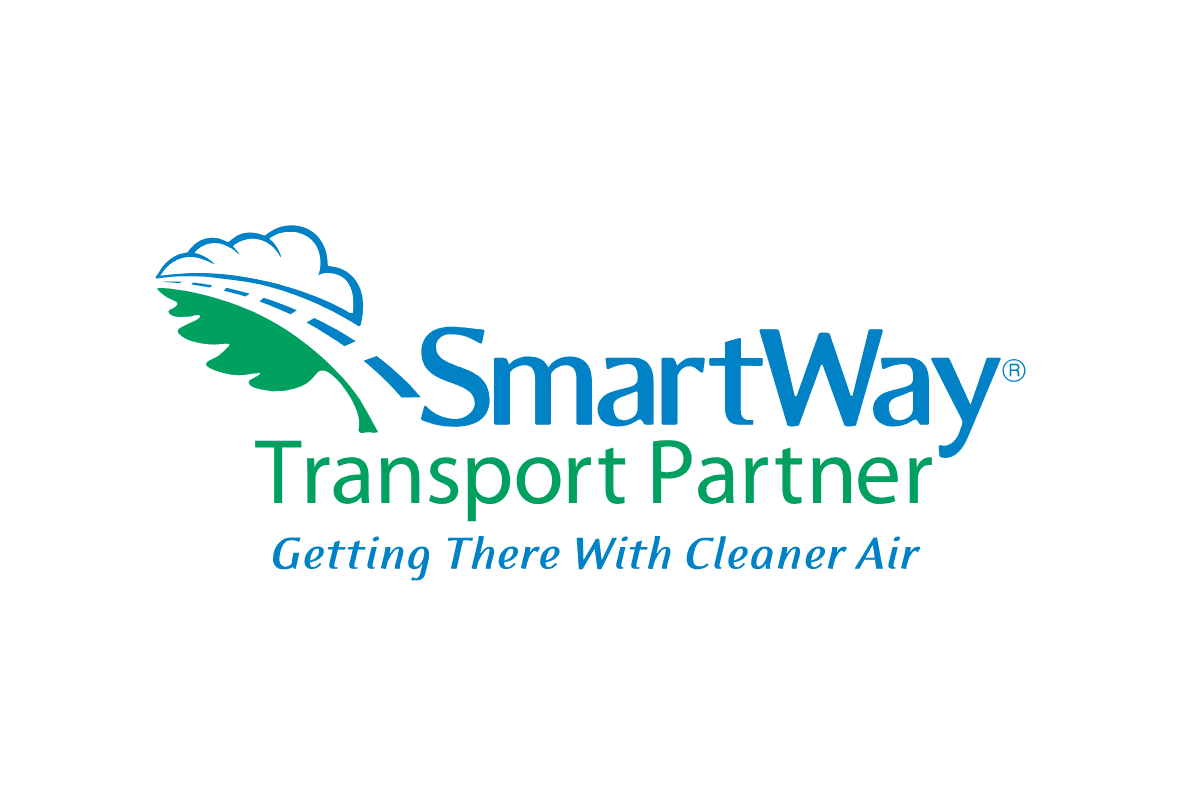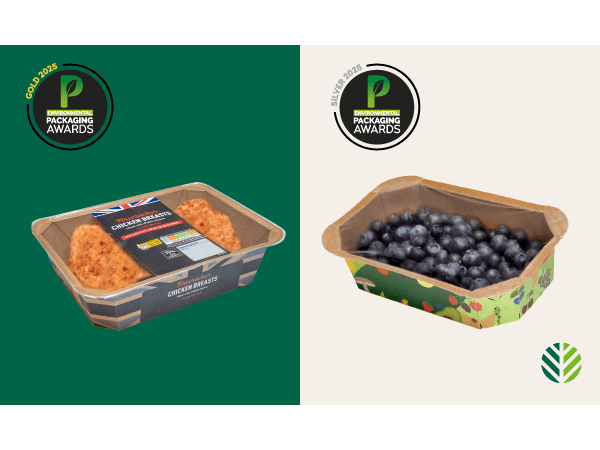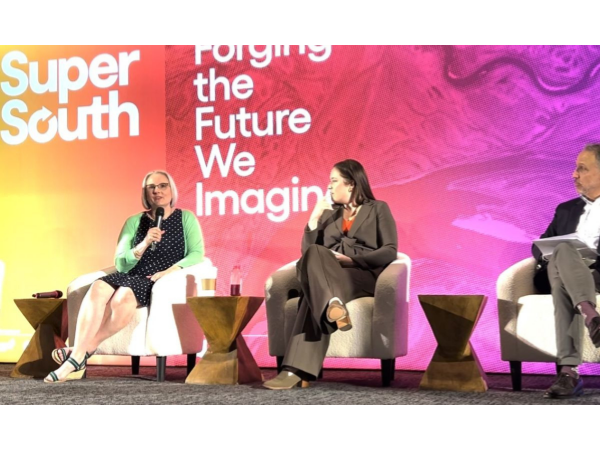Working Toward a Better, More Circular Future
July 10, 2025
Discover sustainable packaging innovations that drive positive environmental outcomes in Graphic Packaging’s 2024 Impact Report.
At Graphic Packaging International, every decision we make is driven by our purpose: to package life’s everyday moments for a renewable future.
Today, more than ever, sustaining our environment for a renewable future can feel insurmountable. But we’re optimistic. Guided by our Better, Every Day sustainability promise, we consider how our actions can help address not only global sustainability issues that touch consumer packaging (like resource scarcity and climate change), but also broader social aspirations to create lasting, positive impacts.
Part of this promise is to create better, more circular packaging, which can help us lessen the impact of consumer packaging (including packaging for food and household products) on our planet.
Our 2024 Impact Report underscores our foundational commitment to sustainability, showcases the innovative strides we made and highlights our aspirations for the years ahead. Click here to read the 2024 Impact Report from Graphic Packaging.
What Is Circularity?
It may not be trending on our social media feeds, but the circular economy reached “megatrend status” last year, according to the Circle Economy. People are discussing, debating and writing about the concept (in its simplest terms) of using more renewable raw materials and keeping materials in circulation longer.
That means reducing, reusing and recycling products at a consumer level. It includes repairing, refurbishing and remanufacturing products. It also means repurposing and recycling at a business level, and, perhaps most importantly, reducing by design at the start.
Not only is circularity a way to achieve sustainable consumption and production but also other interlinked sustainable development goals, like climate action. Combining circular approaches with renewable energy and energy efficiency efforts is the only way to achieve climate action targets, claims the U.N. Environment Programme.
Despite its growing popularity, circularity in practice has declined in recent years.1 Meanwhile, consumption of natural resources continues to grow.2
But there’s a way to close the gap, according to The Circularity Gap Report. Nearly one-fifth of the materials put on the global market are made from new, non-renewable resources that are hard to recycle. Alternatively, companies could minimize this waste from the outset by using renewable and recycled materials and designing more circular products. Getting this chunk of materials back into circulation would significantly bump global circularity.
“Our work to promote the circular economy has led to groundbreaking consumer paperboard packaging solutions that reduce dependency on single-use plastics and are designed to be recovered and recycled.”
Michelle Fitzpatrick, Vice President and Chief Sustainability Officer, Graphic Packaging
What Is Circular Packaging?
Circularity is about more than just recovering and recycling materials at the end of life. We are making our packaging and operations better and more circular every day by:
- Using more renewable, recycled and sustainably sourced raw materials.
- Designing packaging that can be easily recycled, reused or composted, as well as maximized for recovery and conversion into new products.
- Designing “right-sized” packaging — using the minimum necessary materials for functionality and convenience.
- Manufacturing packaging using safer chemicals, more renewable energy and generating less waste.
Through our Design for Environment (DfE) methodology, we optimize circularity and reduce the environmental impact throughout the packaging lifecycle. DfE is about designing out excess material use and waste from the start and minimizing the use of new and non-renewable raw materials in favor of renewable or recycled materials. It enables the recovery of valuable materials to be used again and again, maximizing the number of lifecycles while still providing the functionality to protect products and avoid waste.
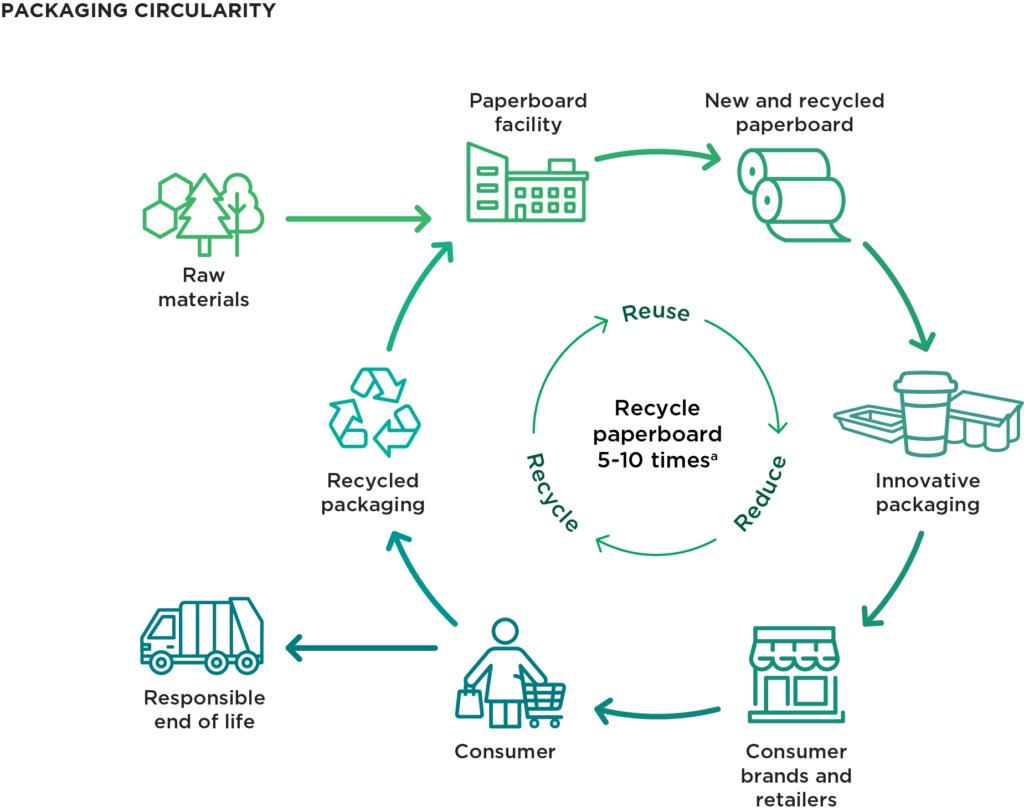
As a global leader in sustainable consumer packaging, we focus on innovations that meet today’s needs and support a better tomorrow. We collaborate with customers to create more circular, more functional and more convenient packaging solutions that support their sustainability goals, while aligning with evolving regulations and consumer expectations.
2024 Sustainability Highlights for Better Packaging
- 1 billion plastic packages replaced with paperboard packaging
- 97% packaging products sold categorized as recyclable3
- 130+ new patents filed
- 29 packaging innovation awards globally
Sustainably Scaling for Responsible Growth
In our DfE methodology, the carbon footprint of our products is another key indicator of packaging circularity. To reduce our carbon emissions, we’re:
- using renewable materials, such as paperboard made from sustainably sourced wood and recovered fiber, to reduce our reliance on fossil fuels.
- optimizing our manufacturing processes to consume less energy.
- reducing waste generated from manufacturing and sent to landfills.
- sourcing local materials and optimizing logistics to reduce transportation emissions.
- collaborating with suppliers and partners to reduce emissions using sustainable practices.
Now more than ever, companies are looking for suppliers to provide packaging with a lower carbon footprint that contributes to their climate commitments. So, as we scale our operations to meet the demand for more circular packaging, we are working to reduce GHG emissions associated with our operations and products by using more renewable fuel and electricity.
We are committed to doing our part to limit global warming. As announced last year, we aspire to achieve net-zero emissions by 2050.
Our first virtual power purchase agreement (VPPA) will enable us to cover 70% of our European packaging operations’ electricity use with renewable energy attribute certificates. The VPPA supports planned solar energy projects in Spain, expected to come online in late 2025.
Our teams also reduce operational waste and associated greenhouse emissions by creatively recovering and reusing materials. Across our global operations, we diverted 69% of our generated waste away from disposal. We recovered more than 1 million metric tons of materials for recycling, including 99.8% of our generated paperboard waste.
And in our supply chain, we continue to source wood materials from local, sustainably managed forests where forest renewal and biodiversity can be safeguarded. We sustainably sourced 89% of the total forest products we purchased in 2024.
In addition to these projects and milestones, we continue to explore many other ways to sustainably scale our innovation capabilities, our operations and our supply chain. Check out the full 2024 Impact Report to see how we strive to do Better, Every Day.
“As we continue this next phase of our company’s growth, I’m confident our commitments to circularity and sustainability will enable us to continue creating value for customers, consumers, employees and shareholders alike.”
Mike Doss, President and Chief Executive Officer, Graphic Packaging
Better by 2030 — and Beyond
Our Better by 2030 sustainability goals — grounded in our Vision 2030 business strategy — outline the near-term actions we are taking to drive circularity for customers and consumers, for the planet and for our people.
But beyond 2030, we must overcome many more challenges to advance packaging circularity and further reduce GHG emissions to achieve net-zero emissions by 2050. We will need advanced recycling and composting infrastructure to capture and reuse 100% of produced consumer paperboard packaging; new, yet-to-be-developed, low emissions manufacturing processes; scalable carbon capture and storage technologies; and zero emissions transportation. Simultaneously, we will need to navigate highly dynamic regulatory landscapes, as the world adapts to global warming, biodiversity loss and increasing resource scarcity.
We need bold, passionate, engaged people to help us innovate new, more circular packaging solutions and sustainably grow our company. So, we’re investing in our people, who deeply care about our purpose and the planet.
We’re proud to say our workplaces are more engaged and safer than ever. In 2024:
- more than 20,000 employees (87%) participated in our employee engagement survey, and our engagement score increased by 4 percentile points.
- our Employee Resource Groups increased participation by 47%.
- 98% of our global sites implemented a Health Safety and Environment Excellence System to proactively prevent incidents, protect employees and the environment, and ensure regulatory compliance.
- we invested $2.2 million in our local communities. Employees packed meals for neighbors, taught students about recyclable packaging and renewable forests, and co-developed college courses on packaging technology and paper-related sciences.
Which brings us back to circularity. The circular economy is not only for the conservation of the environment but also the well-being of all, says the U.N. Environment Programme. It’s about better business, better value for consumers, better jobs and better equality. It involves us all.
We invite you to join us on our Better, Every Day journey. Take a look at our goals and the progress we have made in our first year, and ask us questions on LinkedIn. Stick around as we work toward a better, more circular future in 2030 and beyond.
1 Circularity (measured by the global consumption of secondary materials) dropped 21% from 2018 to 2023. Last year, it fell again from 7.2% to 6.9%, according to The Circularity Gap Report 2025.
2 According to the U.N. Environment Programme, “if we continue business as usual, we will double the extraction of materials in 2060 [compared to 2017 rates], far beyond the planetary boundaries.”
3 Defined as widely recyclable, locally recyclable, or conditionally recyclable.
